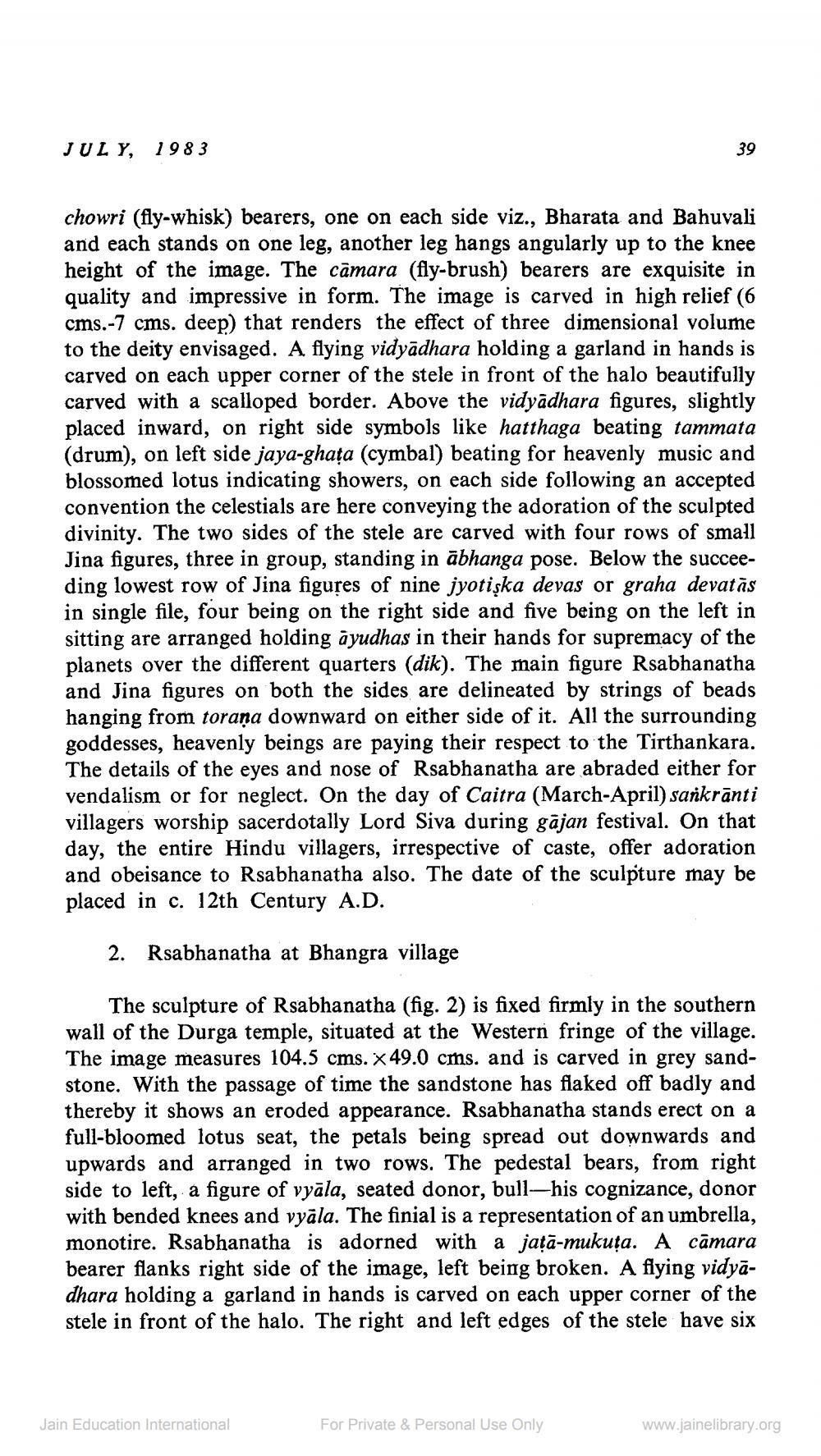________________
JULY, 1983
chowri (fly-whisk) bearers, one on each side viz., Bharata and Bahuvali and each stands on one leg, another leg hangs angularly up to the knee height of the image. The câmara (fly-brush) bearers are exquisite in quality and impressive in form. The image is carved in high relief (6 cms.-7 cms. deep) that renders the effect of three dimensional volume to the deity envisaged. A flying vidyādhara holding a garland in hands is carved on each upper corner of the stele in front of the halo beautifully carved with a scalloped border. Above the vidyadhara figures, slightly placed inward, on right side symbols like hatthaga beating tammata (drum), on left side jaya-ghata (cymbal) beating for heavenly music and blossomed lotus indicating showers, on each side following an accepted convention the celestials are here conveying the adoration of the sculpted divinity. The two sides of the stele are carved with four rows of small Jina figures, three in group, standing in ābhanga pose. Below the succeeding lowest row of Jina figures of nine jyotiska devas or graha devatās in single file, four being on the right side and five being on the left in sitting are arranged holding ayudhas in their hands for supremacy of the planets over the different quarters (dik). The main figure Rsabhanatha and Jina figures on both the sides are delineated by strings of beads hanging from toraņa downward on either side of it. All the surrounding goddesses, heavenly beings are paying their respect to the Tirthankara. The details of the eyes and nose of Rsabhanatha are abraded either for vendalism or for neglect. On the day of Caitra (March-April) sankrānti villagers worship sacerdotally Lord Siva during gājan festival. On that day, the entire Hindu villagers, irrespective of caste, offer adoration and obeisance to Rsabhanatha also. The date of the sculpture may be placed in c. 12th Century A.D.
2. Rsabhanatha at Bhangra village
The sculpture of Rsabhanatha (fig. 2) is fixed firmly in the southern wall of the Durga temple, situated at the Western fringe of the village. The image measures 104.5 cms. X 49.0 cms. and is carved in grey sandstone. With the passage of time the sandstone has flaked off badly and thereby it shows an eroded appearance. Rsabhanatha stands erect on a full-bloomed lotus seat, the petals being spread out downwards and upwards and arranged in two rows. The pedestal bears, from right side to left, a figure of vyāla, seated donor, bull—his cognizance, donor with bended knees and vyāla. The finial is a representation of an umbrella, monotire. Rsabhanatha is adorned with a jațā-mukuta. A cāmara bearer flanks right side of the image, left being broken. A flying vidyādhara holding a garland in hands is carved on each upper corner of the stele in front of the halo. The right and left edges of the stele have six
Jain Education International
For Private & Personal Use Only
www.jainelibrary.org




